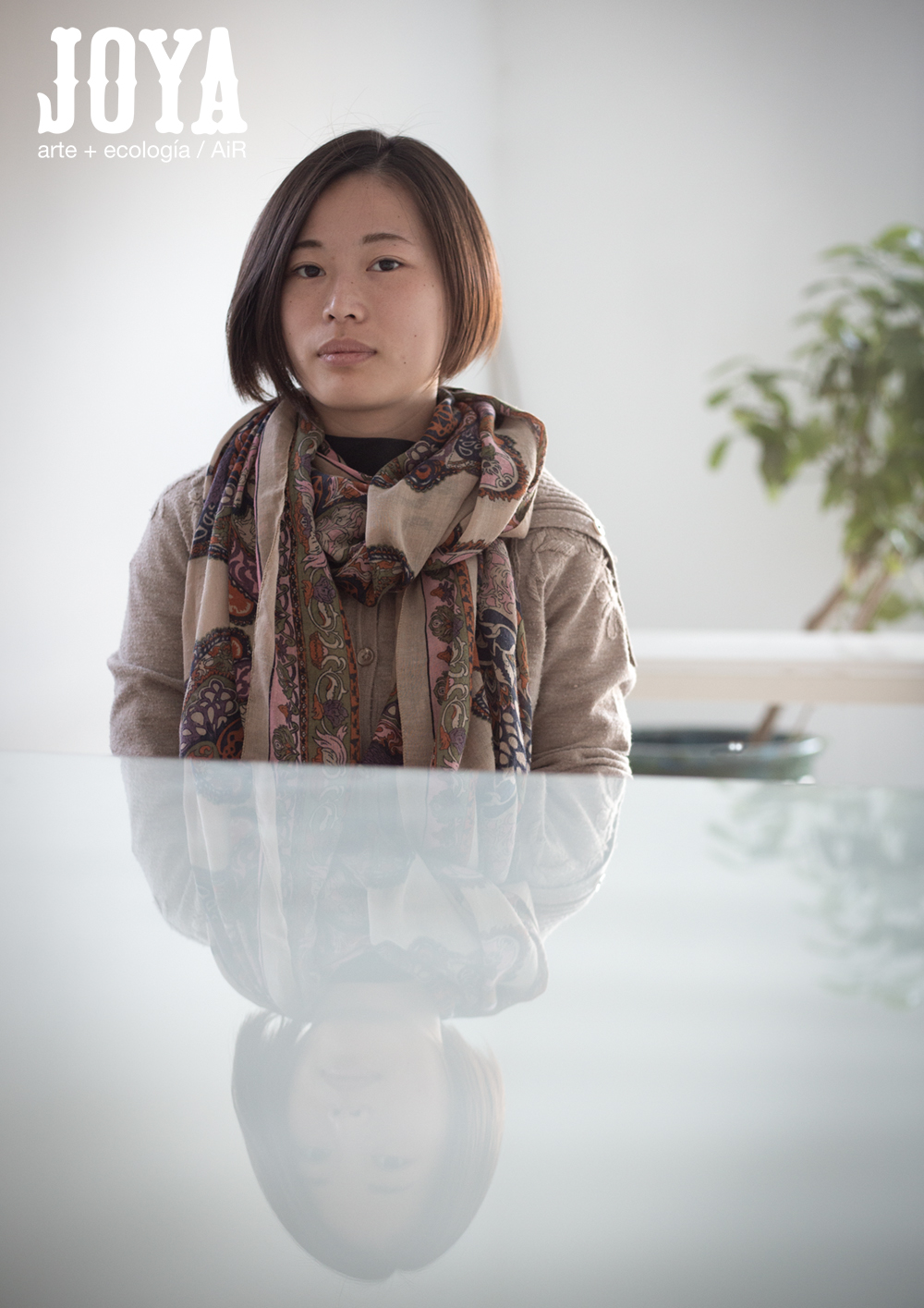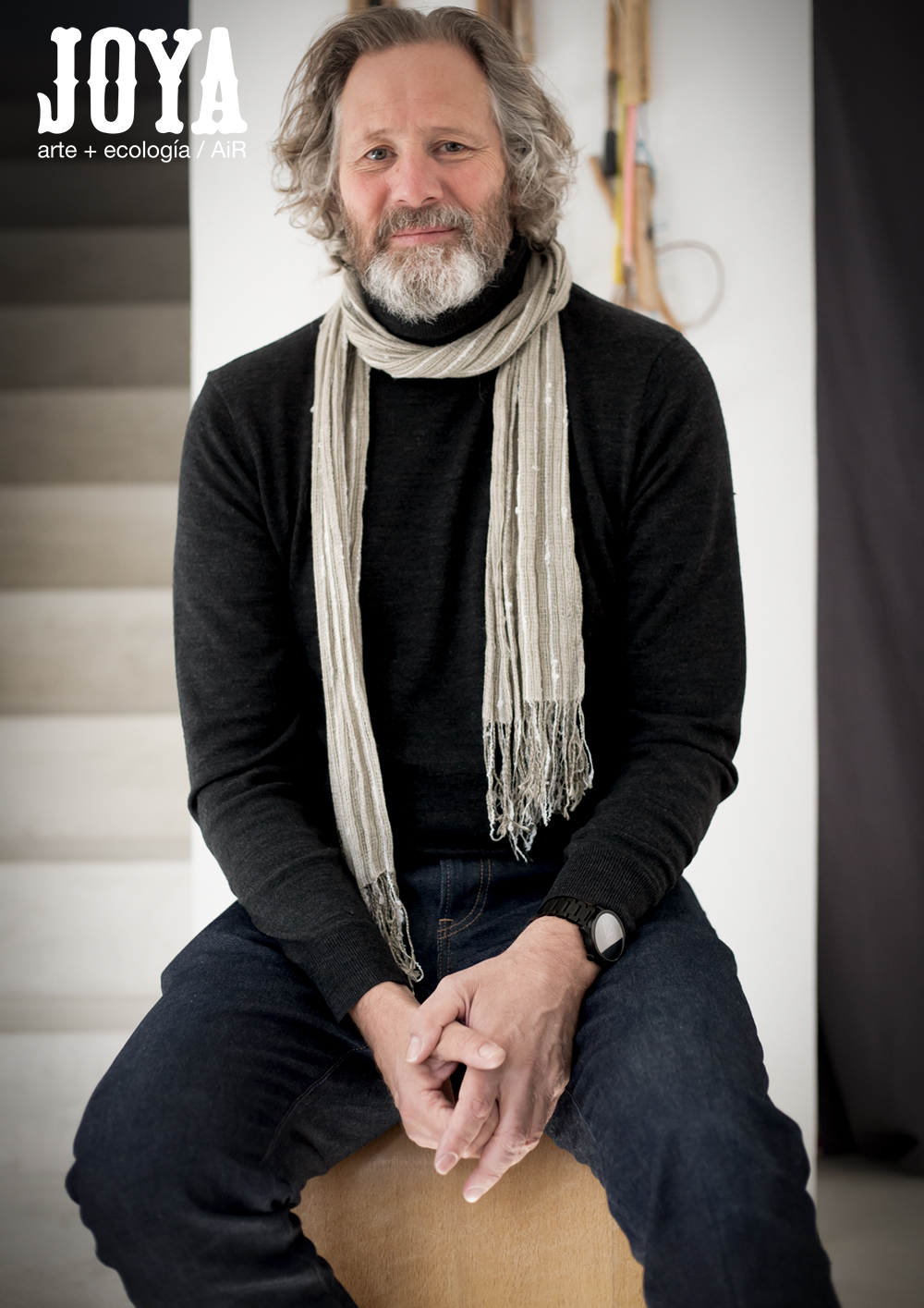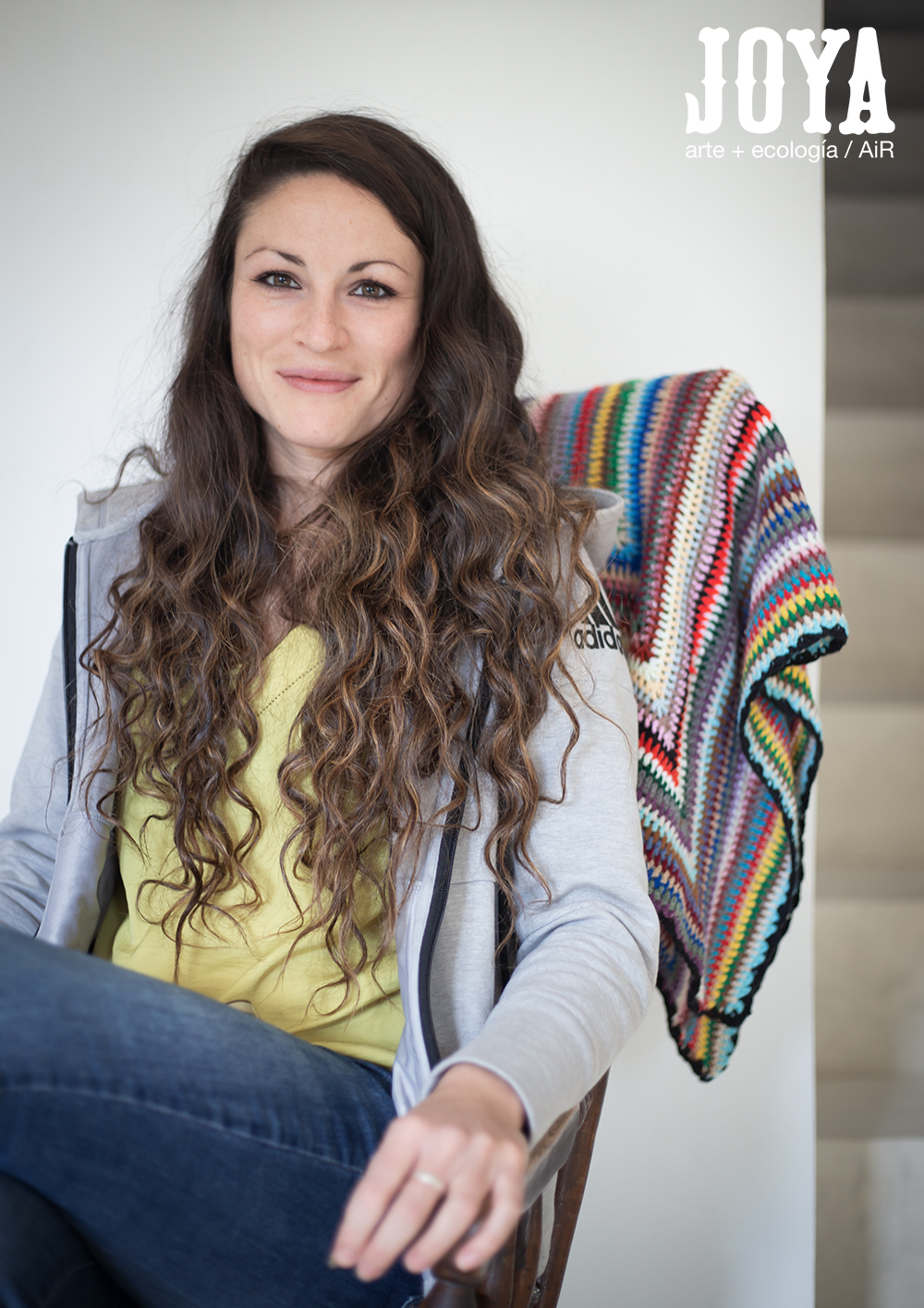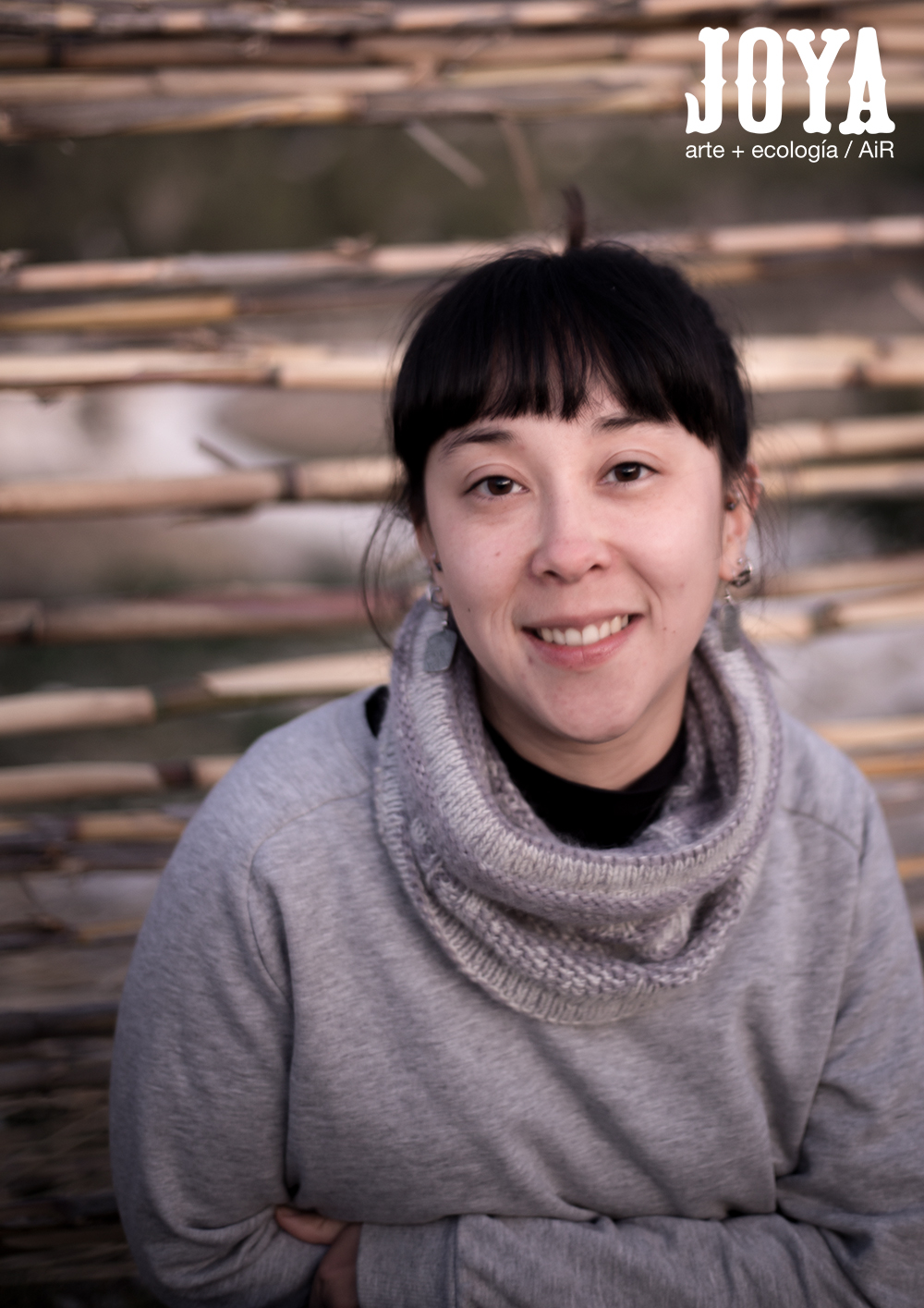photo Simon Beckmann
“My residency at Joya: AiR was supported by the Grantham Art Prize, an award from the Grantham Institute for Climate Change and the Royal College of Art. I had proposed to make spinach anthotypes of the B46 Iceberg that has become detached from the Pine Island Glacier in West Antarctica. The detachment of this iceberg will contribute to rising ocean levels and is a clear indicator of warming in the polar regions. Some of these images were created by the NASA Earth Observatory, a satellite which monitors the Earth from space”.
Melanie King
“As part of the Grantham Art Prize, I wanted to draw attention to this tragic and monumental event, highlighting the rupture point where the iceberg departed. Instead of using environmentally damaging photographic process, I used the spinach anthotype process and sunlight at Joya Arte and Ecologica, to bleach the image into existence. To make an anthotype, you blend spinach leaves into a paste with a small amount of vodka and water. The next step was to strain the paste into a thin liquid, which can then be painted onto watercolour paper”.
Melanie King
“I built up three layers of “paint”, leaving each layer to dry between each coat. At Joya, I placed a positive transparency of the NASA Earth Observatory images of the B46 Iceberg on top of the coated paper, clamped underneath a heavy piece of glass. After four hours of strong sunlight, I was left with an image due to the naturally photosensitive properties of the chlorophyll within the spinach. Within the exhibition at Imperial College London, the anthotypes will slowly fade with time, mirroring the fragility of our natural environment”.
“At Joya: AiR, I was particularly struck by the dryness of the landscape, apparently the driest landscape in Europe. Unexpectedly, I was drawn to photographing the dusty, pale limestone ground as it resembled the surface of the Moon. Out taking photographs of the stars at night, I imagined standing within a lunar landscape observing the cosmos”.
Melanie King
Melanie King
“I was inspired by the sustainable attitude to building and adapting to the local environment. Simon says that the building is 98% carbon neutral, due to the clever use of solar and wind energy production. Waste from the building is filtered into reed beds, meaning that this waste doesn’t enter the landscape. It was also interesting to hear from Simon about his plans to regenerate the land surrounding Joya: AiR, and how the introduction of culture to the area may help to re-cultivate land that has been abandoned”.
Melanie King
“Due to the remote, quiet location of Joya: AiR, I was extremely productive during my six day residency. I created anthotypes, had plenty of solitude for writing towards my PhD, took analogue photos of the stars for my “Ancient Light” series, went on many restorative walks and even had room for unexpected projects that I hadn’t planned”.
Melanie King
Melanie King is an artist and curator with a specific focus on astronomy. She is co-Director of super/collider, Lumen Studios and the London Alternative Photography Collective. She is a lecturer on the MA programme at the Royal College of Art, and on the BA Photography course at University of West London. Melanie is a part time doctoral student at the Royal College of Art.
Melanie's solo exhibitions include Leeds Art University and the Blyth Gallery, Imperial College London. She has exhibited in group shows at The Photographers' Gallery, Argentea Gallery, Guest Projects, Space Studios and the Sidney Cooper Gallery. Melanie has also exhibited in a wide range of international galleries, such as the Williamson Gallery in Los Angeles, CAS Gallery in Japan and Unseen Amsterdam. Melanie has attended residencies organised by Bow Arts, Grizedale Forest and SIM Reykjavik, Iceland.
Melanie has been involved in a number of large scale commissions, including Green Man Festival, Vivid Projects, Bompas and Parr X Citizen M Hotel, Mayes Creative, Design Miami x COS Stores, Chelsea Flower Fringe and the Wellcome Trust.
Melanie regularly presents her work at conferences, universities and galleries. Notable venues include the Victoria and Albert Museum, The Photographers' Gallery, Tate Modern, Art Center Pasadena, University of the Arts Helsinki, The European Geosciences Conference: Vienna, Kosmica: Mexico, Kosmica: Paris, Helsinki Photomedia and Second Home. Melanie has provided guest lectures to Bath Spa University, Leeds Art University, London South Bank University, London College of Communication, Central Saint Martins International Space University: Space Studies Programme.
Melanie has demonstrated Moholy Nagy's photogram process on-screen for the BBC4 Bauhaus Rules documentary. Melanie has also provided an on-screen interview and telescope demonstration for the "She Takes The Night" film produced by Museum of London and Photofusion.
Melanie also organises participatory workshops in relation to her practice. She has developed workshops for the TATE Modern, Whitechapel Gallery, The Photographers' Gallery, TATE Exchange, the Institute of Physics, East Street Arts, Kosmica: Mexico, SALT Festival: Norway, London College of Communication Short Courses, Photofusion, Phytology, Hackney Arts, Ditto Press and Brighton Photo Biennal.
BELOW: more photographs from Melanie Kings ‘Ancient Light’ series of photographs taken at Joya: AiR…
Melanie King
Melanie King
Melanie King
Melanie King
Melanie King







































